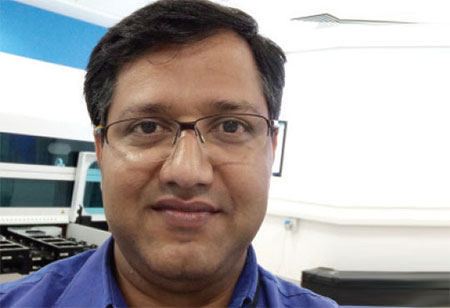Importance of Innovation in Medical Devices Industry
By Vishwanath Pratap Singh, Innovation Lead for Medical Device Client,
Accenture, India

Vishwanath Pratap Singh, Innovation Lead for Medical Device Client, Accenture, India
Innovation in medical device industry means innovation in complete life cycle of the medical device from conceptualization to end of life of the device. Innovation can help in getting patients’ needs right, connecting medical device to its users such as doctors, lab technicians and patients, leveraging latest technology and innovative and more efficient ways for compliance to various regulatory requirements.
Last two decades have seen many disruptive technologies in various industries, but the highly regulated market of medical devices has been less impacted in comparison to other industries and this offers medical device industry the opportunity to leapfrog and make fundamental and sweeping changes that will sustain for years to come. As a sign of change, an unprecedented number of mergers and acquisitions have taken place recently in the pharmaceutical and medical device fields. Till now organizations worked on individual objectives- the product companies on product sales, service companies on providing service at right price point and somewhere in the mix, the common goal of achieving the best outcome for the patient and overall value for the healthcare system has been out of focus.
The global healthcare industry is undergoing a profound and fundamental shift from rewarding volume of sales, procedures performed, and patients treated, towards a focus on improving overall health, patient outcomes and value for the health system. A health system is evolving which will be truly patient responsive, responsible and centric. This has opened the door to various low risk devices to enter in the field of medical devices for example wearable technologies and mobiles applications to track and store data. To speed up the process of integration and interoperability, most of the medical device organizations along with other services and connected industries, came together in defining standards and developing code base that can be used to develop systems and applications more efficiently, for example Continua Health Alliance.
New business models are emerging and they are breaking old boundaries. Medical device companies are transforming into service entities, providing lab management services and focusing on the remote management of specific patient population. At the same time, we are seeing new types of collaborative pairings – medical device companies with pharmaceutical firms and digital technology companies to be paid for what is done. Earlier there was no way to pay based on outputs or patient value (best possible health achieved) and system value (effective treatment at efficient costs), but now it is possible to collect data on the clinical activities of healthcare, the health status of patient pretreatment, and the change in health status after treatment and it is possible to set the foundations for a healthcare market focused on output and value.
Other digital data – from electronic medical records (EMRs) and personalized genomic information, to lifestyle and personal health data – along with the ability to analyze the data, represent another revolutionary force driving unprecedented insights and facilitating scientific breakthroughs in the development of new drugs and therapeutic devices.
Value based payment contracting is still in its early stages and there is a strong need of transition from fee-for-service, where payments were made based on what was done, to value-based, where payment is based on the outcomes realized. Healthcare systems that reward value and patient outcomes can have tremendous benefit to the economic productivity and long–term performance of countries all over the world. Innovation and adaptation ensures a company can adapt, stay relevant, and gainfully contribute to the new age of digital healthcare.
Medical device industry will get benefitted, with better outcome to patient’s outcome. Organizations with fundamentally shift their focus from volume to value will gain influence and a competitive edge.
Few examples:
• Evidence for clinical trials and post approval studies used to take years to progress, now through digitally gathered real world data, we can gain that evidence at large scale in days or weeks.
• Pharmaceutical and medical device companies used to put their products out on the market and wonder why results in the actual clinical settings were different from what they expected. Now with the ability to track activities and outcome in near real time, they can identify the factors in people's lives that influence the effectiveness of treatment approaches and therapeutic products.
• Organizations can see the extent to which gap in treatments, non-adherence to dietary and activity modification influence outcomes. As a result, they can contemplate new strategies that might include filling those gaps for patients.
• Now treatment plan can be extended to industry's involvement with patients beyond the office, hospital, or clinic, track progress in real time, and adjust treatment as necessary along the way.
Strategic alignment and adoption is key to success and can be done with adoption of innovation in complete life cycle of medical device to achieve the value-based medical device and healthcare solutions. Innovation is now patient centric and bringing the latest scientific insights and a focus on the most devastating of patient disease to bear to advance new specialty therapeutics and complementary product and service offerings.




